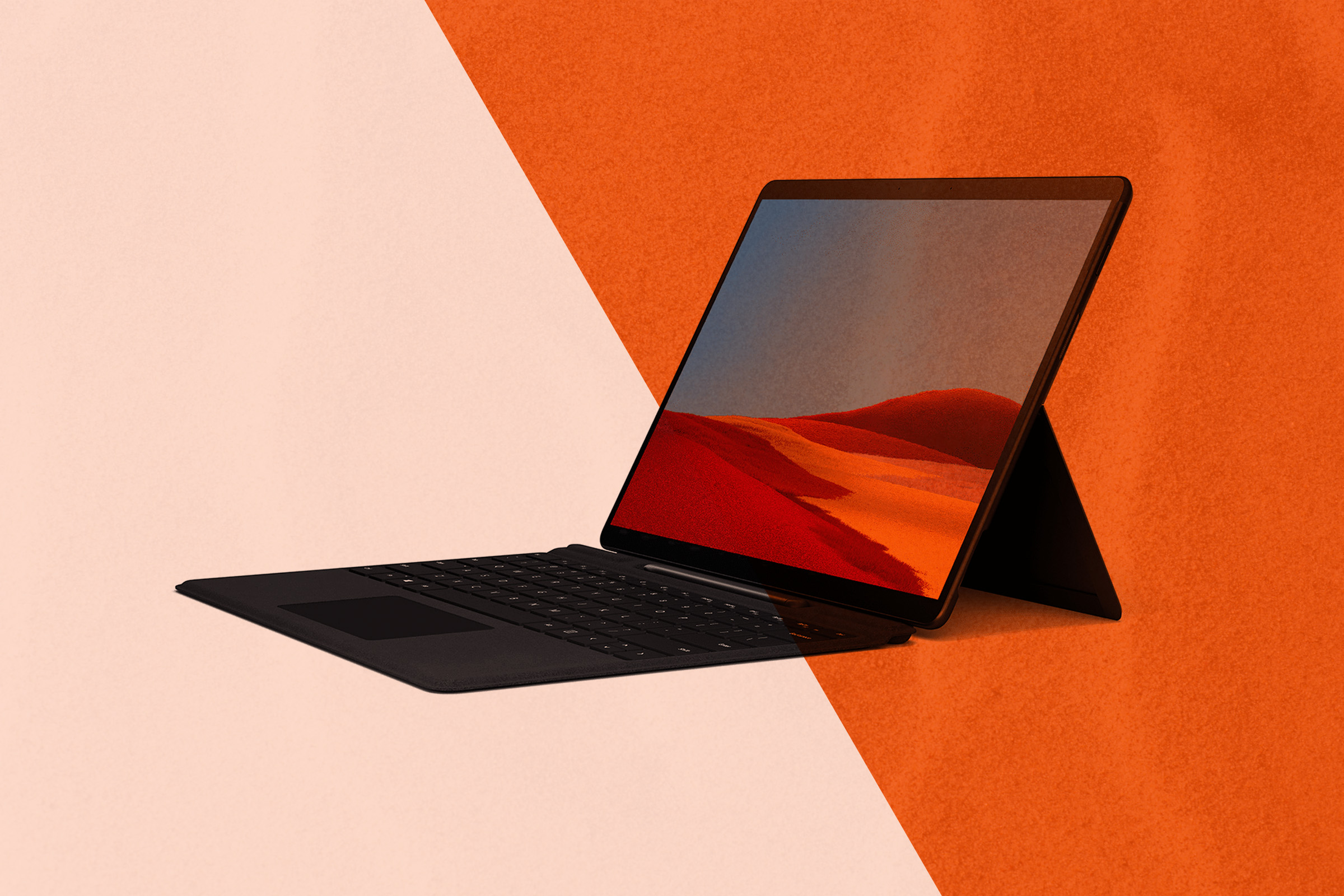
Microsoft’s Surface Pro X represents a major transition for the company, showcasing its vision for the future of mobile productivity. Yes, it’s still a Microsoft Surface. Yes, it still runs Windows. But instead of building on traditional laptop technology, it’s adopting innovations from the mobile world, and betting on boosted battery life and always-on connectivity to woo the working Joe on-the-go. Unfortunately, the Surface Pro X drops the ball where it matters, and puts the idea of Microsoft’s commitment to such radical change into question. At least it’s a gorgeous laptop.
Its construction, a sleek and contemporary interpretation of its Surface design language, makes few compromises. The Surface Pro X, in its matte black aluminum, looks downright cool. It retains the iconic (and, depending on how you’re sitting, inconvenient) kickstand that allows it to stand up like your standard laptop, or lay nearly flat, easel-like, for any drawing you’d like to do. Its rear camera shoots in 4K resolution, while its front-facing camera does 1080p, and supports Windows Hello’s facial recognition for password-free logins. Its 13-inch touchscreen display is a delight to stare at, making text, images, and video look crisp.
Still, it has the redundant Surface Connect Port used to charge the Surface or connect it to docks, a necessity made obsolete by the progress of the universal and capable USB-C port, of which the Surface Pro X has two, like Apple’s MacBook Air. Unfortunately, the 2-in-1 design does not include a headphone jack, an unfortunate omission considering the already sparse port count and less than stellar integrated stereo speakers.
Microsoft doesn’t include a keyboard with the $999 Surface Pro X, considering it (and the Surface Slim Pen) optional. The standard-issue Surface Keyboard will run you $139, or you could pay $269 for the complete package of Surface Signature Keyboard and bundled Surface Slim Pen. It’s a big mistake, and frustrating to think about shelling out even more money on a pretty expensive device in order to type (the cheaper Surface Keyboard lacks the Signature Keyboard’s slick divot for simultaneously storing and wirelessly charging the $145 Surface Slim Pen, should you choose to get one at a later date).
The most striking change isn’t its exterior, however. Inside the Surface Pro X is an experiment of sorts: the SQ1 chip, a joint effort between Microsoft and Qualcomm. Instead of the x86 architecture used in many computers today, the new processor uses what’s known as ARM architecture, found in mobile devices like your smartphone. The switch is supposed to lead to better battery life and improved LTE support, the main features propping up the Surface Pro X.
In reality, the change in processors leads to a whole host of compatibility issues, enough so that using the Surface Pro X on a daily basis was a frustrating exercise in patience. Windows 10 still isn’t ready for its debut on the Pro X. Bugs abound, even after the much-appreciated quick rollout of some important fixes. When apps would open (if they opened at all), performance ranged from acceptable to choppy and sporadic. Even Microsoft’s own Edge browser felt unresponsive more often than not. As for battery life, the later days of my testing let me stay unplugged for longer, but at times I would watch my power rapidly drain while simply browsing the web.
One need only look at the Microsoft’s App Store to see how crossed the wires are. For one, it consistently showed apps and games that would not run on the Surface Pro X. Huge banners appeared for the company’s all-you-can-play game buffet that is Game Pass, yet not a single game was compatible with the Surface Pro X, both in terms of raw processing power as well as system architecture. It’s like the store and the Surface Pro X speak two different languages. And in a way, they do. Unfortunately, Microsoft seems to have dropped the ball in terms of translation.
Naturally, it’s up to developers to ensure their software is up to date and compatible with a piece of hardware. But the state of Microsoft’s apps and compatibility issues have plagued it since its first attempt at an ARM-based 2-in-1, the Surface RT. Its dismal ecosystem of apps failed to impress then, and fails to impress now.
I’m of two minds about the Surface Pro X. It’s hard to fault Microsoft for being so ambitious in its quest to innovate when it comes to Windows and the Surface line. But the Pro X’s potential is frustratingly hamstrung by poor planning and a narrow view of its audience. Widespread app incompatibility and sporadic performance issues make it impossible to deem the Surface Pro X a device worthy of serious consideration, especially when it costs over a grand to get it tricked out just right.
More Must-Reads from TIME
- Introducing the 2024 TIME100 Next
- The Reinvention of J.D. Vance
- How to Survive Election Season Without Losing Your Mind
- Welcome to the Golden Age of Scams
- Did the Pandemic Break Our Brains?
- The Many Lives of Jack Antonoff
- 33 True Crime Documentaries That Shaped the Genre
- Why Gut Health Issues Are More Common in Women
Write to Patrick Lucas Austin at patrick.austin@time.com